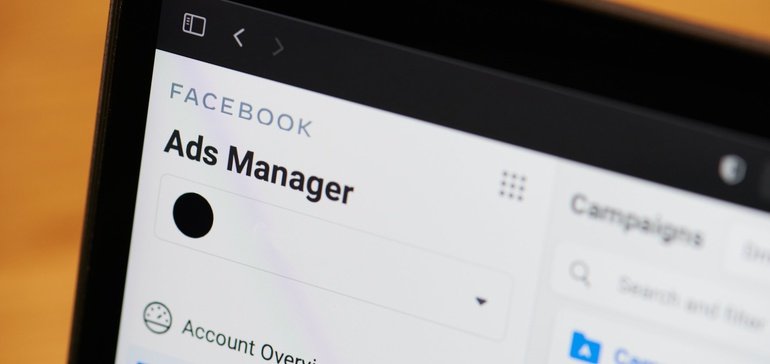SOCIAL
How to Fix Ad Measurement With Incrementality Testing and Experiments

While advertising attribution has always been a thorny path for marketers to navigate, events of the past 18 months have caused a significant upheaval in media measurement that must be addressed quickly – for the sake of all parties involved.
It’s convenient to blame the collapse in advertising measurement on policy changes made by Apple and Google, but social media platforms have always used flawed last-touch attribution to report on campaign performance. By counting every conversion an ad was in the path of, platforms ignored the fact that some of those events would have happened anyway.
Before iOS 14.5 and ATT, incrementality testing consistently proved many platforms were overreporting conversions, but it was mostly ignored because last-touch metrics made them look good. The amount of extra credit could vary widely by audience type – think prospecting (mild) vs. retargeting (heavy). Advertisers were either unaware of the inaccuracies, or turned a blind eye because it made them look good too.
Now, due to increasing data privacy restrictions, social media platforms are losing the ability to track conversions for a significant segment of users, causing them to begin underreporting conversions using that same broken last-touch system of measurement.
Many organizations are working to solve for the loss of visibility through ID alternatives or revamped attribution modeling but these approaches – challenged with effectiveness and lingering privacy concerns – could be years off from becoming a reality. Advertisers need relief right now.
Incrementality testing can prove the value of ad campaigns on social media platforms, even when their own measurement systems cannot. Regardless of how dire the prognosis for cookies becomes, incrementality measurement will continue to be effective – and it already exists.
Anchored on first-party data and cohort-based analytics, incrementality measurement is unaffected by inevitable policy changes because it doesn’t require tracking at the user-level to produce reliable results. Independent of platform bias and rooted in proven experiment methodology, testing for incrementality can provide ongoing insight at a tactical level so advertisers can continuously move dollars to where they drive the greatest business impact.
We work with 100+ DTC brands, and every single one of them has some level of media budget being invested into Facebook. Some advertisers we work with are using incrementality testing to justify continued or increased investment in Facebook, knowing their campaigns are performing better than Facebook attribution would lead them to believe. For luxury brand Shinola, incrementality experiments recently revealed Facebook was underreporting performance of prospecting campaigns by 413%.
Other brands want to diversify away from steadily rising Facebook ad costs and are using incrementality experiments to test and scale into new channels like TikTok, Snap, Pinterest, or CTV. With incrementality and geo testing, marketers can spend a small fraction of budget to understand how pushing into new channels will pay off.
While decisions by Apple, Google and others can and do have a significant impact on the media industry (and all the businesses that operate within it), when it comes to platform attribution, they have simply exposed a broken system of self-reporting that never should have been acceptable in the first place.
Incrementality testing and experimentation can finally put to bed a decades-long struggle, for platforms and marketers alike, to become the standard advertising measurement approach that is useful, lasting and acceptable for everyone involved.
Read the new guide, Incrementality Measurement for DTC Marketers, to learn how incrementality testing works and how to set up your own experimentation practice today.
Source link
SOCIAL
Snapchat Explores New Messaging Retention Feature: A Game-Changer or Risky Move?

In a recent announcement, Snapchat revealed a groundbreaking update that challenges its traditional design ethos. The platform is experimenting with an option that allows users to defy the 24-hour auto-delete rule, a feature synonymous with Snapchat’s ephemeral messaging model.
The proposed change aims to introduce a “Never delete” option in messaging retention settings, aligning Snapchat more closely with conventional messaging apps. While this move may blur Snapchat’s distinctive selling point, Snap appears convinced of its necessity.
According to Snap, the decision stems from user feedback and a commitment to innovation based on user needs. The company aims to provide greater flexibility and control over conversations, catering to the preferences of its community.
Currently undergoing trials in select markets, the new feature empowers users to adjust retention settings on a conversation-by-conversation basis. Flexibility remains paramount, with participants able to modify settings within chats and receive in-chat notifications to ensure transparency.
Snapchat underscores that the default auto-delete feature will persist, reinforcing its design philosophy centered on ephemerality. However, with the app gaining traction as a primary messaging platform, the option offers users a means to preserve longer chat histories.
The update marks a pivotal moment for Snapchat, renowned for its disappearing message premise, especially popular among younger demographics. Retaining this focus has been pivotal to Snapchat’s identity, but the shift suggests a broader strategy aimed at diversifying its user base.
This strategy may appeal particularly to older demographics, potentially extending Snapchat’s relevance as users age. By emulating features of conventional messaging platforms, Snapchat seeks to enhance its appeal and broaden its reach.
Yet, the introduction of message retention poses questions about Snapchat’s uniqueness. While addressing user demands, the risk of diluting Snapchat’s distinctiveness looms large.
As Snapchat ventures into uncharted territory, the outcome of this experiment remains uncertain. Will message retention propel Snapchat to new heights, or will it compromise the platform’s uniqueness?
Only time will tell.
SOCIAL
Catering to specific audience boosts your business, says accountant turned coach

While it is tempting to try to appeal to a broad audience, the founder of alcohol-free coaching service Just the Tonic, Sandra Parker, believes the best thing you can do for your business is focus on your niche. Here’s how she did just that.
When running a business, reaching out to as many clients as possible can be tempting. But it also risks making your marketing “too generic,” warns Sandra Parker, the founder of Just The Tonic Coaching.
“From the very start of my business, I knew exactly who I could help and who I couldn’t,” Parker told My Biggest Lessons.
Parker struggled with alcohol dependence as a young professional. Today, her business targets high-achieving individuals who face challenges similar to those she had early in her career.
“I understand their frustrations, I understand their fears, and I understand their coping mechanisms and the stories they’re telling themselves,” Parker said. “Because of that, I’m able to market very effectively, to speak in a language that they understand, and am able to reach them.”Â
“I believe that it’s really important that you know exactly who your customer or your client is, and you target them, and you resist the temptation to make your marketing too generic to try and reach everyone,” she explained.
“If you speak specifically to your target clients, you will reach them, and I believe that’s the way that you’re going to be more successful.
Watch the video for more of Sandra Parker’s biggest lessons.
SOCIAL
Instagram Tests Live-Stream Games to Enhance Engagement

Instagram’s testing out some new options to help spice up your live-streams in the app, with some live broadcasters now able to select a game that they can play with viewers in-stream.
As you can see in these example screens, posted by Ahmed Ghanem, some creators now have the option to play either “This or That”, a question and answer prompt that you can share with your viewers, or “Trivia”, to generate more engagement within your IG live-streams.
That could be a simple way to spark more conversation and interaction, which could then lead into further engagement opportunities from your live audience.
Meta’s been exploring more ways to make live-streaming a bigger consideration for IG creators, with a view to live-streams potentially catching on with more users.
That includes the gradual expansion of its “Stars” live-stream donation program, giving more creators in more regions a means to accept donations from live-stream viewers, while back in December, Instagram also added some new options to make it easier to go live using third-party tools via desktop PCs.
Live streaming has been a major shift in China, where shopping live-streams, in particular, have led to massive opportunities for streaming platforms. They haven’t caught on in the same way in Western regions, but as TikTok and YouTube look to push live-stream adoption, there is still a chance that they will become a much bigger element in future.
Which is why IG is also trying to stay in touch, and add more ways for its creators to engage via streams. Live-stream games is another element within this, which could make this a better community-building, and potentially sales-driving option.
We’ve asked Instagram for more information on this test, and we’ll update this post if/when we hear back.
-

 MARKETING7 days ago
MARKETING7 days agoRoundel Media Studio: What to Expect From Target’s New Self-Service Platform
-

 SEO6 days ago
SEO6 days agoGoogle Limits News Links In California Over Proposed ‘Link Tax’ Law
-
SEARCHENGINES6 days ago
Daily Search Forum Recap: April 12, 2024
-

 SEARCHENGINES5 days ago
SEARCHENGINES5 days agoGoogle Core Update Volatility, Helpful Content Update Gone, Dangerous Google Search Results & Google Ads Confusion
-

 SEO5 days ago
SEO5 days ago10 Paid Search & PPC Planning Best Practices
-

 MARKETING6 days ago
MARKETING6 days ago2 Ways to Take Back the Power in Your Business: Part 2
-

 MARKETING4 days ago
MARKETING4 days ago5 Psychological Tactics to Write Better Emails
-

 PPC6 days ago
PPC6 days agoCritical Display Error in Brand Safety Metrics On Twitter/X Corrected














You must be logged in to post a comment Login